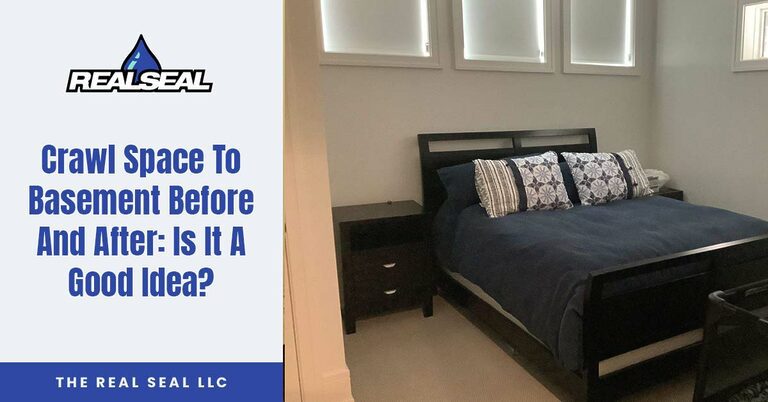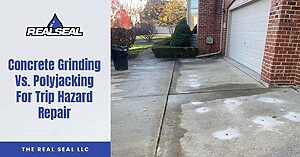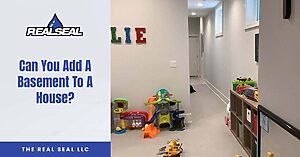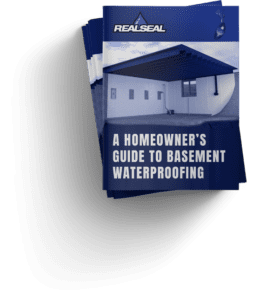Are you thinking of converting your crawl space into a basement? If so, you’re in the right place.
In this article, we’ll look at the process of converting your crawl space into a basement, including what you need to know before you start. We’ll also discuss some of the benefits of this type of renovation and how it can improve your home’s value.
So, if you’re ready to learn more about crawl space to basement conversions, keep reading.
What’s the Difference Between Crawl Space and Basement?
Before you decide to transform your crawl space into a basement, let’s first understand the differences between the two. The main distinction between a crawl space and a basement lies in their height and potential usability.
According to Architectural Digest, a crawl space is a small space under the main floor of a home. These spaces are often unfinished with little to no standing room, as most measure less than 5 feet high. They are primarily useful for housing utilities such as HVAC, plumbing, and electrical wiring. Crawl spaces provide access to maintenance and foundation repairs rather than a livable space. Crawl spaces minimize the risk of damage in flood-prone areas and can act as extra storage space.
On the other hand, a basement is a space entirely or partially below the ground level. The ceiling height of a basement is usually 7 to 9 feet tall. It provides a cooler space that can efficiently be converted into your home’s living area. This characteristic makes basements more valuable in terms of added space and potentially increasing a home’s market value.
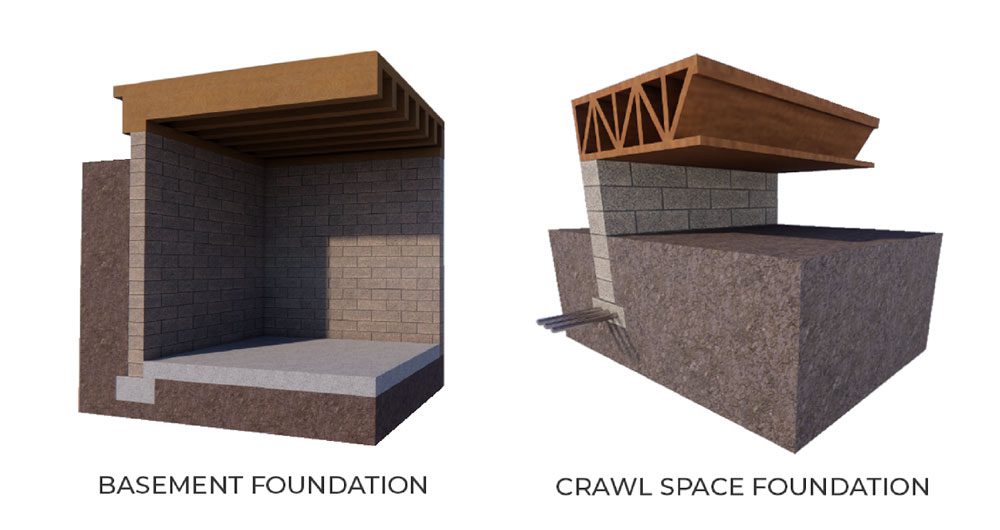
Is It Possible to Construct a Basement Under an Existing House?
Yes, building a basement under an existing house is possible, although the process is complex and requires careful planning and execution. This type of project typically involves lifting the house temporarily to excavate and construct the new basement. The method chosen for excavation and support can vary depending on site access, the house size, and local building regulations.
Why Turn Your Crawl Space Into a Basement?
Is it worth converting a crawl space to a full basement? For some homeowners, the benefits of having a basement outweigh the cost and inconvenience of adding one.
Here’s why:
Additional Space
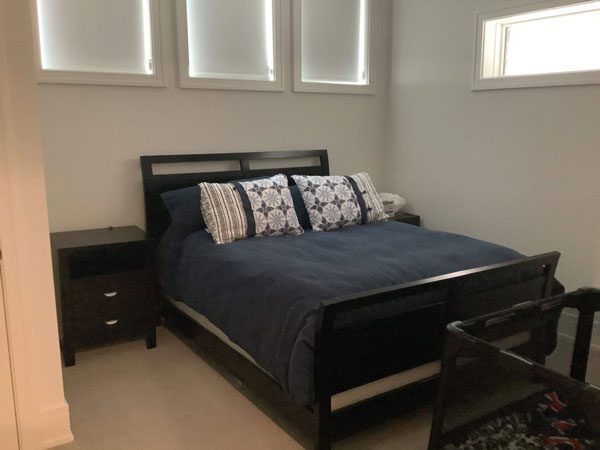
With the current state of the housing market, every square inch of your home is a valuable asset. Converting a crawl space into a basement provides additional square footage that you can use for various purposes, such as extra bedrooms, a family room, a workspace, or storage areas. This expansion allows you to maximize your property’s potential and adapt it to your needs without moving or undertaking more extensive expansions.
Boosts Home’s Value
According to HGTV, converting a basement into a living area can result in up to 86% of the project cost recovered when a house is sold. This means you get an additional space and can recoup a big portion of your investment when it comes time to sell. This is especially true if the basement is finished to the same level as the rest of the house, including flooring, walls, and ceilings.
Accessibility and Convenience
From a practical perspective, converting a crawl space into a basement can make it easier to access and maintain utilities. Basements often house critical home systems like heating, plumbing, and electrical networks. Having these systems in a basement instead of a cramped crawl space can make repairs, upgrades, and maintenance significantly more accessible and less costly. This accessibility not only simplifies home improvements but can also enhance these systems’ overall safety and functionality.
Is a Basement or Crawl Space Better?
While a basement offers tons of benefits, it may not always be the best option for every homeowner.
Basements increase the overall square footage of usable space and add more value to a home. Crawl spaces, on the other hand, are cheaper to build than basements. They can be a good choice in areas with a high water table or where flooding is a concern. Crawl spaces raise the house off the ground to protect it from water-related issues.
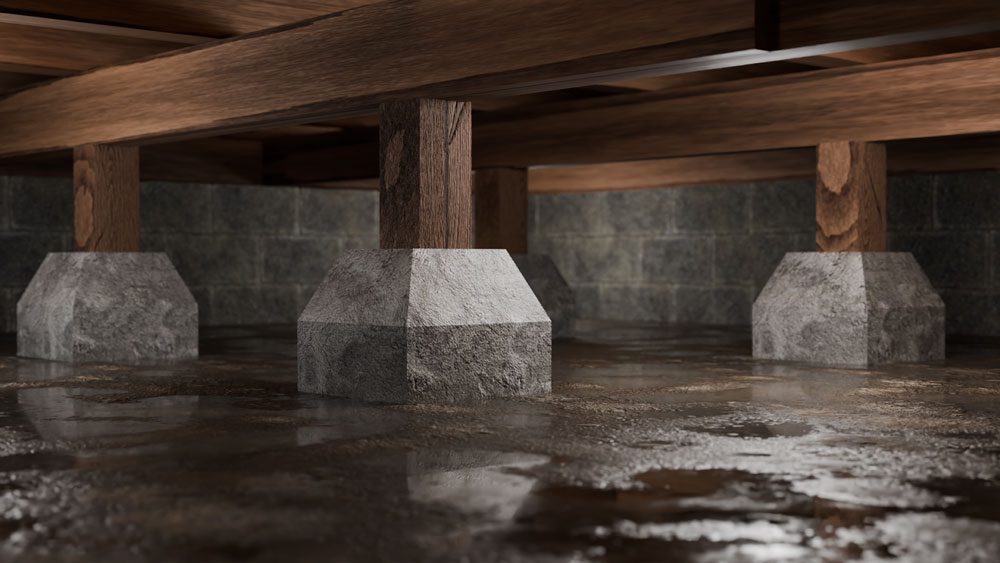
Factors to Consider
Ultimately, the choice between a crawl space and a basement should be based on a thorough consideration of these factors:
- Initial construction and long-term maintenance costs.
- Climate and topography of the building site.
- Personal needs for additional living or storage space.
- Potential for return on investment through increased home value.
- Accessibility for repairs and upgrades to home systems.
Conversion Process: Crawl Space To Basement Before And After
To convert your crawl space to a basement, here’s the process you can expect:
1. Assess the condition of the crawl space
- Begin by examining the foundation and the crawl space to determine if a transition to a full basement is feasible.
- Address any existing crawl space problems, such as water issues, before or during the conversion.
2. Provide a temporary support system
- Your home’s existing foundation will be temporarily removed until the new foundation is constructed.
- Based on the construction plans and the structural engineer’s recommendations, your contractor will build a scaffolding or a similar support structure.
3. Excavate the crawl space
- Remove all unnecessary elements and unwanted materials from beneath the home.
- Dig to a depth of six to eight feet to ensure a full-sized basement.
4. Build and reinforce the basement
- You must build the new footings, install the basement walls, and lay down the floor slab.
- Once these elements are in place, leave it to cure, a process that may take up to one month.
5. Install drainage system and waterproof the basement
- Add a drainage system if needed to stop any future issues or the hassle of adding one later.
- Waterproofing includes sealing cracks or gaps and applying a waterproof membrane to walls and floors to prevent moisture and water damage.
6. Connect the home to the new foundation
- Once the foundation is complete, reconnect the home to the new structure.
- Ensure the new foundation correctly supports the home and provides a full basement space.
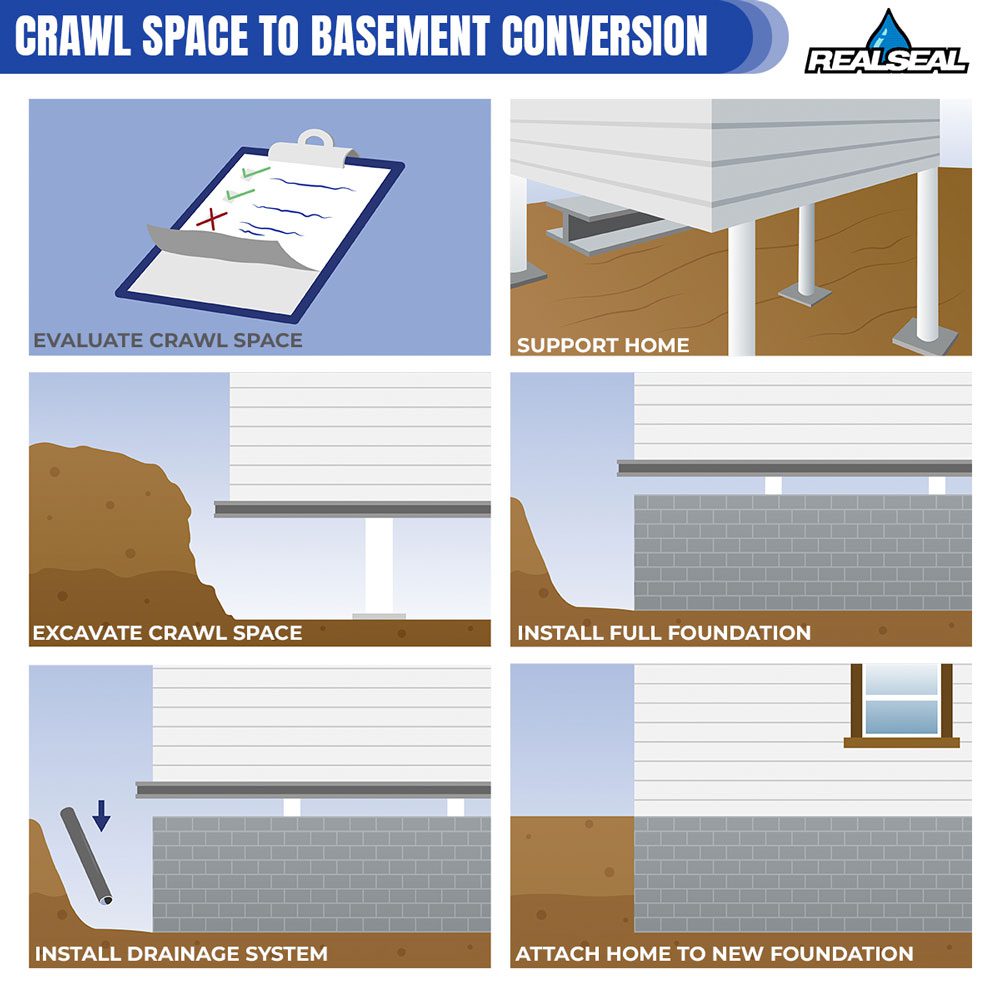
Crawl Space Conversion Alternatives
You might think that crawl space conversion to a basement is your only option. But there are actually a few other alternatives that can be just as effective.
- Crawl Space Encapsulation: This involves sealing the crawl space from outside elements with a vapor barrier. Proper insulation is added, and a dehumidifier is installed to control moisture. This can significantly improve the home’s energy efficiency and mitigate issues like mold growth and wood rot.
- Insulation Upgrades: Another step can be to upgrade or update the insulation within the crawl space. High-quality insulation materials can help maintain consistent indoor temperatures. It helps reduce the load on heating and cooling systems and improves the home’s overall comfort level.
- Outdoor Storage Sheds: For homeowners who find that crawl space conversion isn’t the right solution, building an external above-ground structure like a storage shed might be a perfect alternative for extra storage space.
- Crawl Space Repairs: Converting a crawl space into a basement can substantially boost living space and home value, but it is a challenging and expensive project. Repairs may be a better option if your main objective is to eliminate existing crawl space issues.
The Significance of Consulting a Professional
Converting a crawl space into a basement should not be taken lightly. It’s a complex project that requires meticulous planning and execution, as well as the proper tools and materials.
If you’re considering this project, it’s essential to consult with a professional contractor. They can help you determine if your home is suitable for conversion and what steps must be taken to complete the project successfully.
If you live in the Chicagoland area, the best people to work or consult with are The Real Seal team. We have years of experience working on crawl spaces, basements, and foundations. Contact us today to learn more about our services and how our team can help you with your home improvement project.
